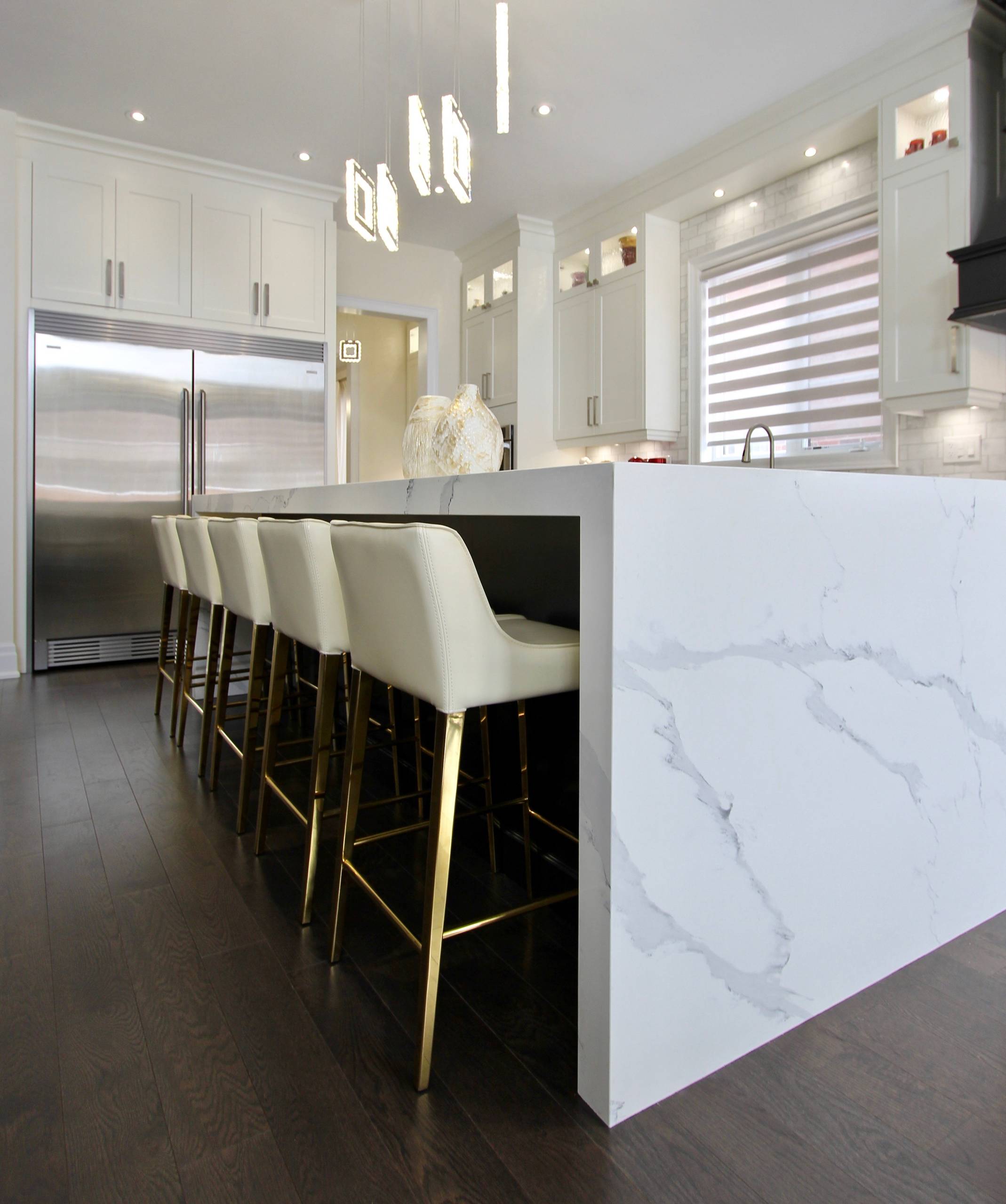GRANITE, QUARTZ OR MARBLE?

With the advent of quartz countertops in kitchen and bath applications, you’re faced with yet another decision. Granite, quartz or Marble? Each of these solid surfaces has it’s pros and cons in different applications.
First, lets look at the visible differences. Granite is usually made up of many different colours, and tends to have un-even distribution of these colours and patterns, as it is naturally formed. In comparison, marble is usually a solid colour with veins of a different colour throughout the stone. Quartz is available in a wide variety of colours, and always has a very even pattern because it is in a sense, man-made.
Granite
Granite is extracted from quarries in the earth and later cut into the slabs that make their way into your kitchen as countertops. Once extracted, the granite slab is cut to the desired thickness, buffed and shined, and given an edge profile. The pattern on one slab of granite to the next can vary greatly, which brings a natural and lively look to a kitchen. Be advised that in some cases, even a granite sample in a kitchen showroom can be quite different than the slab that is used.
Granite is a great choice for high traffic areas like the kitchen. Although granite is porous, a sealant can prevent it from absorbing spilled liquids. Experts suggest sealing these countertops every 3-5 years for longevity. Granite is extremely durable, however one should always be careful because it can still be chipped and stained.
Quartz
Quartz is also made of natural stone, however it is blended with resin. The process to produce quartz allows manufacturers to create even patterns. Quartz is available in a variety of colours and textures. These countertops have become very popular in the recent years because people are drawn to the colours and even pattern distribution, as well as the low maintenance involved. Did you know you can have a quartz countertop that looks just like Carrerra Marble, without the problems discussed below?
Quartz has virtually no maintenance (i.e. sealing every few years). It is more stain-resistant than granite, however spills should be wiped promptly to prevent stains. Harsh cleaning solutions should not be used on quartz. With that said, quartz has one drawback – in some cases it can discolour over time from UV exposure. In most cases this is never noticeable, unless only a portion of the counter sees sunlight.
Marble
This stone tends to be light in colour, and have veining patterns. Marble has less variety in terms of colour choices than both Granite and Quartz. Marble slabs are also smaller than both quartz and granite, because it is not as durable. So keep in mind, there will be more seams in the installation.
People are drawn to the inherent elegance of this natural stone. Light and airy colours bring a mediterranean look to your space. Marble is a softer and more porous stone than granite, making it easier to scratch and stain. With it’s clean and timeless look, it is unfortunate that marble is (usually) kept out of the kitchen, and used in low-traffic areas like the bathroom. However, there is no doubt that it brings an elegance and brightness to bathrooms that other materials can not.
Take-away
There are certainly different viewpoints on which stone is your best choice, but this is what we have learned through experience, application and customer feedback. A factor that we did not talk about is cost, because this varies greatly from one fabricator to the next, and it would be inaccurate to rank the stones in order of price. Choosing the right stone is dependant on a lot of factors, including your taste, budget and the kind of use and abuse the stone may encounter in your home.
